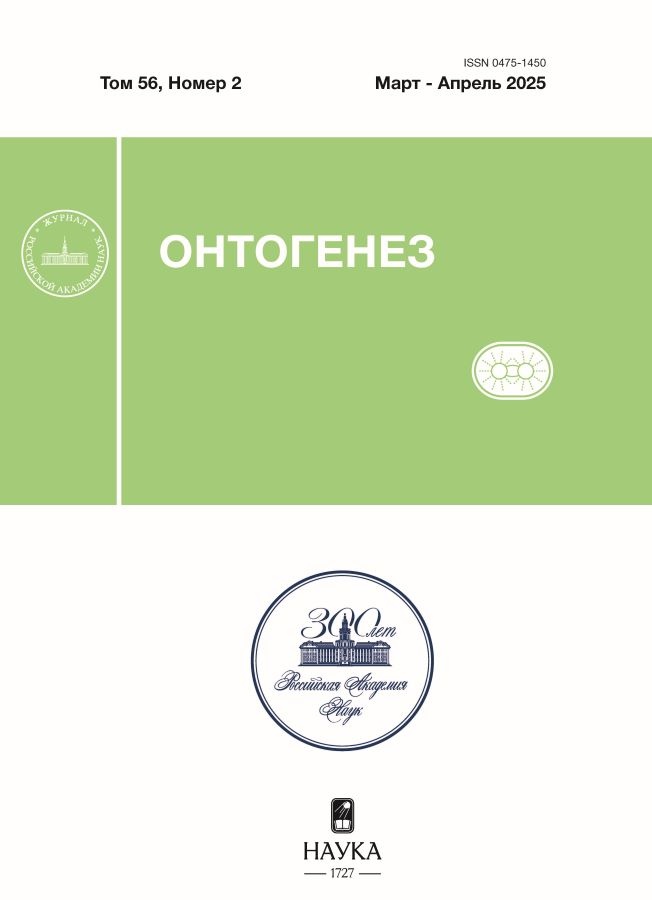Возможность редактирования генома человеческих эмбрионов продолжает обсуждаться
- Авторы: Шаров К.С.1
-
Учреждения:
- Институт биологии развития им. Н. К. Кольцова РАН
- Выпуск: Том 56, № 2 (2025)
- Страницы: 86-92
- Раздел: ТОЧКА ЗРЕНИЯ
- URL: https://medjrf.com/0475-1450/article/view/685714
- DOI: https://doi.org/10.31857/S0475145025020021
- EDN: https://elibrary.ru/KLARLS
- ID: 685714
Цитировать
Полный текст
Аннотация
После отмены Международным обществом по исследованию стволовых клеток (ISSCR) “Правила 14 дней”, регулирующего в первую очередь исследования, проводимые на человеческих эмбрионах, в биоэтике появился ряд новых дискуссионных моментов, связанных с возможностью и перспективами редактирования генома человека на эмбриональной стадии развития. Теоретически с помощью технологий редактирования генома можно лечить более 10 000 наследственных патологий. На практике технологии редактирования генома уже применялись для лечения ряда болезней взрослых людей. Однако далеко не всегда терапия с помощью генных технологий приводила к выздоровлению. С другой стороны, закономерно встает вопрос: возможно ли использовать данные методы для редактирования генома человеческих зародышей и гамет, чтобы дети, у которых должны были бы проявиться в течение жизни наследственные заболевания, рождались здоровыми? В данном кратком сообщении рассматриваются аргументы за и против. Автор приходит к выводу, что на данной стадии развития генной инженерии риски перевешивают потенциальную пользу.
Ключевые слова
Полный текст
Об авторах
К. С. Шаров
Институт биологии развития им. Н. К. Кольцова РАН
Автор, ответственный за переписку.
Email: const@idb-ras.ru
Россия, Москва
Список литературы
- Anzalone A.V., Gao X.D., Podracky C.J. et al. Programmable deletion, replacement, integration and inversion of large DNA sequences with twin prime editing // Nat Biotechnol. 2022. V. 40. P. 731–740. https://doi.org/10.1038/s41587-021-01133-w
- Arjmand B., Larijani B., Hosseini M.S. et al. The horizon of gene therapy in modern medicine: advances and challenges // Adv. Exp. Med. Biol. 2020. V. 1247. P. 33–64. https://doi.org/10.1007/5584_2019_463
- Balon K., Sheriff A., Jacków J. et al. Targeting cancer with CRISPR/Cas9-based therapy // Int. J. Mol. Sci. 2022. V. 23. Art. 573. https://doi.org/10.3390/ijms23010573
- Birney E. A society-wide conversation is needed about germline genome editing using CRISPR // Nat. Med. 2024. V. 30. P 30–32. https://doi.org/10.1038/s41591-023-02681-1
- De Graeff N., De Proost L., Munsie M. ‘Ceci n’est pas un embryon?’ The ethics of human embryo model research // Nat. Methods. 2023. V. 20. P. 1863–1867. https://doi.org/10.1038/s41592-023-02066-9
- Doudna J.A., Charpentier E. Genome editing. The new frontier of genome engineering with CRISPR-Cas9 // Science. 2014. V. 346 (6213). Art. 1258096. https://doi.org/10.1126/science.1258096
- Doudna J.A., Sternberg S.H. A Crack in Creation: Gene Editing and the Unthinkable Power to Control Evolution. San Francisco: Mariner, 2017.
- FDA (Federal Drug Association). Casgevy approval. 2024. URL: https://www.fda.gov/vaccines-blood-biologics/casgevy Foreman A.L., Liddell K., Franklin S. et al. Human embryo models: the importance of national policy and governance review // Curr. Op. Genetics Develop. 2023. V. 82. Art. 102103. https://doi.org/10.1016/j.gde.2023.102103
- Goguen R.P., Chen M.J., Dunkley O.R.S. Gene therapy to cure HIV infection // Virologie (Montrouge). 2023. V. 27. P. 63–84. https://doi.org/10.1684/vir.2023.1024
- Grebenshchikova E.G., Andreyuk D.S., Vasiliev A.V. et al. Russia’s stance on gene-edited humans // Nature. 2019. V. 575. P. 596. http://dx.doi.org/10.1038/d41586-019-03617-x
- Griciuc A., Federico A. N., Natasan J. et al. Gene therapy for Alzheimer’s disease targeting CD33 reduces amyloid beta accumulation and neuroinflammation // Hum. Mol. Genet. 2020. V. 29. P. 2920–2935. https://doi.org/10.1093/hmg/ddaa179
- Guo C., Ma X., Gao F. et al. Off-target effects in CRISPR/Cas9 gene editing // Front. Bioeng. Biotechnol. 2023. V. 11. Art. 1143157. https://doi.org/10.3389/fbioe.2023.1143157
- Harari Y.N. Homo deus: A Brief History of Tomorrow. New York: Penguin, 2017.
- Hsu P.D., Scott D.A., Weinstein J.A. et al. DNA targeting specificity of RNA-guided Cas9 nucleases // Nat. biotechnol. 2013. V. 31. P. 827–832. https://doi.org/10.1038/nbt.2647
- Huxley A. Brave New World. London: Nobel, 2024.
- ISSCR Guidelines. ISSCR Guidelines for Stem Cell Research and Clinical Translation. https://www.isscr.org/docs/default-source/all-isscr-guidelines/2021-guidelines/isscr-guidelines-for-stem-cell-research-and-clinical-translation-2021.pdf?sfvrsn=979d58b1_4
- Kim A., Lalonde K., Truesdell A. et al. New avenues for the treatment of Huntington’s disease // Int. J. Mol. Sci. 2021. V. 22. Art. 8363. https://doi.org/10.3390/ijms22168363
- Kondkar A.A., Abu-Amero K.K. Leber congenital amaurosis: Current genetic basis, scope for genetic testing and personalized medicine. Exp Eye Res. 2019. V. 189. Art. 107834. https://doi.org/10.1016/j.exer.2019.107834
- Ledford H. CRISPR gene editing in human embryos wreaks chromosomal mayhem // Nature. 2020. V. 583. P. 17–18.
- Liu G., Lin Q., Jin S. et al. The CRISPR-Cas toolbox and gene editing technologies // Molecular Cell. 2022. V. 82. № 2. P. 333–347. https://doi.org/10.1016/j.molcel.2021.12.002
- Matthews K.R.W., Iltis A.S., Marquez N.G. et al. Rethinking human embryo research policies // Hastings Center Rep. 2021. 2021. V. 51. P. 47–51. https://doi.org/10.1002/hast.1215
- Pierce E.A., Aleman T.S., Jayasundera K.T. et al. Gene editing for CEP290-associated retinal degeneration // New Engl. J. Med. 2024. V. 390. P. 1972–1984. https://doi.org/10.1056/NEJMoa2309915
- Rivron N.C., Arias A.M., Pera M.F. et al. An ethical framework for human embryology with embryo models // Cell. 2023. V. 186. P. 3548–3557. https://doi.org/10.1016/j.cell.2023.07.028
- Sassin W., Donskikh O., Gnes A. et al. Evolutionary environments. Homo sapiens — an endangered species? Innsbruck: Studia Universitätsverlag, 2018.
- Scholefield J., Harrison P.T. Prime editing–an update on the field // Gene Therapy. 2021. V. 28. P. 396–401. https://doi.org/10.1038/s41434-021-00263-9
- Statement from the Organising Committee of the Third International Summit on Human Genome Editing, Royal Society. https://royalsociety.org/news/2023/03/statement-third-international-summit-human-genome-editing
- Subbaraman N. Limit on lab-grown human embryos dropped by stem-cell body // Nature. 2021. V. 594. P. 18–19. https://doi.org/10.1038/d41586-021-01423-y
- Thompson A.A., Walters M.C., Kwiatkowski J. et al. Gene therapy in patients with transfusion-dependent β-thalassemia // New Engl. J. Med. 2018. V. 378. P. 1479–1493. https://doi.org/10.1056/NEJMoa1705342
- Warnock M. Report of the committee of inquiry into human ertilization and embryology. London: Her Majesty’s Stationery Office, 1984. http://www.hfea.gov.uk/docs/Warnock_Report_of_the_Committee_of_Inquiry_into_Human_Fertilisation_and_ Embryology_1984.pdf
- Zhao Z., Shang P., Mohanraju P. et al. Prime editing: advances and therapeutic applications // Trends Biotechnol. 2023. V. 41. P. 1000–1012.
Дополнительные файлы











